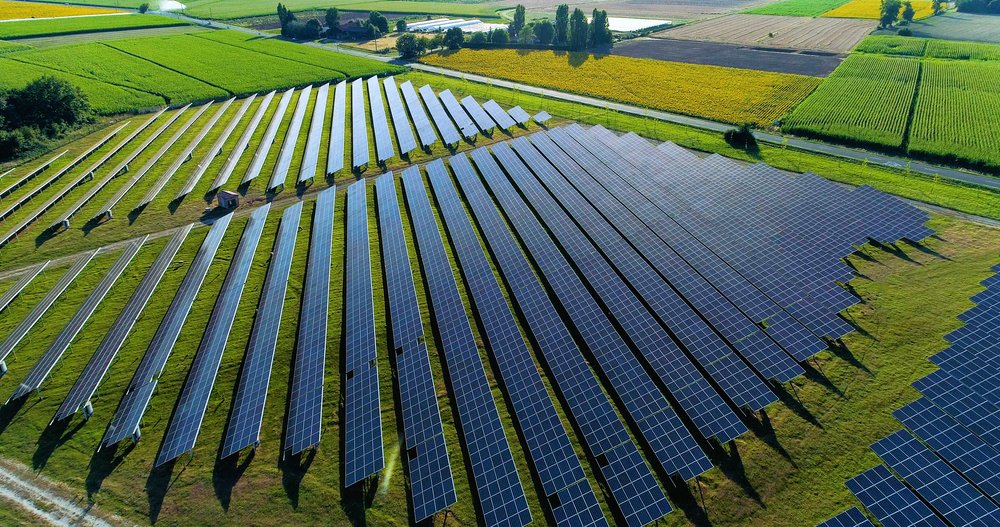Solar power is the cleanest and most abundant source of renewable energy of our world today. It is also becoming one of the biggest energy industries in America and other European countries. Since 2010, the cost to install solar systems declined to up to 70 percent. This has been continually declining through the years.
What are solar farms?
Solar farms, also called solar parks or solar power plants, are environmentally friendly power plants that harvest large-scale solar power and turn it into electricity. Most solar farms are nature friendly and generate no waste or noise. Solar farms could very well be the future of global energy. The rise in solar farms today are driven by businesses and governments who are aiming for low carbon energy.
How do solar farms work?
When sunlight falls on the electrons in the solar plates, they produce energy through the movement of the particles. Each individual solar plate has around 60 to 72 photovoltaic cells. Each cell is made of semiconductor materials similar to those found in computer chips.
Solar Farms Pros
Here are some of the positive benefits of solar farms:
- Sustainability – As long as the earth revolves around the sun, solar parks are an unlimited source of power. With the help of solar stations, various institutions and businesses can minimize their use of fossil fuels.
- Low Maintenance – Solar stations need little maintenance to operate. Except for multiple occasions of cleaning, solar farms can operate for two decades without needing a tune-up.
- Silent – There is hardly any noise from solar farms.
- No Emissions – Solar energy relies solely on gathering energy from the sun and converting it into electricity for various uses. The use of large scale solar energy can reduce greenhouse gases which contributes to global warming.
- Incentives – Solar energy has a variety of financial incentives for many countries in the world. If you live in the US, you have several tax rebates and state policies that make solar more affordable.
- Low Environmental Impact – Compared to fossil fuels, solar energy has substantially less negative impact on the environment. Their gas emissions are so little and they also don’t require water to generate power.
- Save Money – Solar power can save you a lot of money on your monthly electric bill. So if you have a large-scale solar farm installed for your business, you can significantly reduce your bill. Plus, you can sell the extra power that you have to other nearby businesses.
Solar Farms Cons
Here are some of the negative effects of solar parks:
- Space – It’s undeniable that solar farms take up a lot of space. In fact, most solar farms are around 100 acres or less in size. Because of this, most solar parks are built in rural areas. This is a concern for most environmentalists who are against the degradation of habitat during the building of solar power plants.
- High upfront cost – Although their prices have significantly declined, the large upfront cost of a solar farm makes it a risky business.
- Intermittency – The biggest drawback to most solar farms is its intermittent energy generation. Solar power plants only generate electricity when the sun is shining. This means that during the night, the supply is slow.
- High Water Usage – Solar plate use a lot of water during the manufacturing process. So, building them in the dry climate regions may be a little difficult.
Where is the world’s largest solar plant?
The world’s largest solar power plant is currently found in China. It is called the Tengger Desert Solar Park located in Zhongwei, Ningxia. This solar plant is also known as the ‘Great Wall of Solar’ due to its impressive scale. It covers 1,200km of the Tengger desert. The solar park is owned by China National Grid and Zhongwei Power Supply Company. It now supplies energy to more than 600,000 homes.
Which country is the biggest producer of solar?
Germany is currently the country with the highest capacity of solar photovoltaic power (PV). Their solar systems are now worth 7.6 GW. Their solar panels can generate around 23TWh of electricity. In 2013, their solar energy systems can cover 3% of the country’s total electricity consumption. Germany aims for 25% before 2050. Other countries with also impressive solar production are France, Belgium, Spain, and Italy.
Solar Panels, The Future of Energy? There are plenty of reasons why solar energy can be the solution to our depleting fossil fuel resources. Its worldwide use can also significantly reduce air pollution which is caused by fossil fuels. New research and development has led to improvements of solar systems. Some studies are now working on better efficiency for solar panels even during evening use. Other investments are focused on creating floating solar panels for reservoirs. There are also studies that seek to find a cleaner manufacturing process for solar farms.










